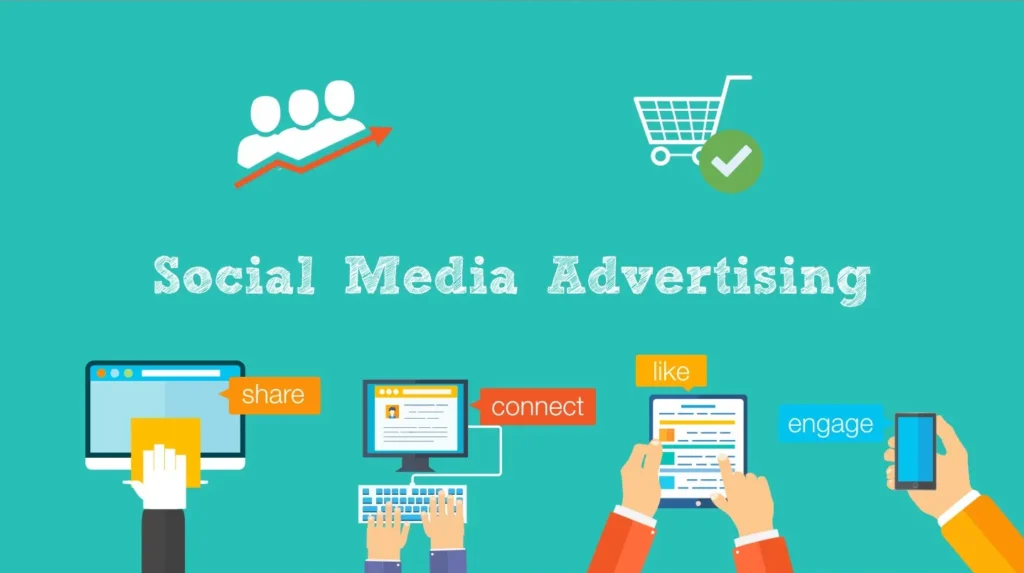In the dynamic realm of digital marketing, one term has risen to prominence – Social Advertising. As businesses strive to connect with their target audience in an ever-evolving online landscape, understanding the intricacies of social network marketing has become paramount. This blog serves as a comprehensive guide to unravel the nuances of social media marketing, exploring its significance, strategies, and how it can be a game-changer for your brand.

Understanding Social Media Marketing:
What is Social Advertising?
Social Media advertising refers to the strategic use of paid advertising on social media platforms to reach a specific audience, promote products or services, and achieve predefined marketing objectives. Unlike organic social media posts, social marketing involves a budget allocation to ensure the content is seen by a larger and more targeted audience.
Why Social Media Advertising Matters:
1. Unprecedented Reach:
- Social media platforms, such as Facebook, Instagram, Twitter, and LinkedIn, boast billions of active users. Social network marketing allows businesses to tap into this expansive user base, ensuring their message reaches a diverse and global audience.
2. Precise Targeting:
- One of the key advantages of social Media is the ability to target specific demographics, interests, and behaviors. Platforms offer advanced targeting options, ensuring that your content is shown to individuals most likely to engage and convert.
3. Engagement and Interaction:
- Social platform marketing encourages engagement by facilitating likes, comments, and shares. These interactions not only boost the visibility of your content but also create a sense of community around your brand.
4. Measurable Results:
- Unlike traditional advertising, social advertising provides robust analytics and insights. Businesses can measure the performance of their campaigns in real-time, allowing for data-driven decision-making and optimization.
5. Cost-Effective Marketing:
- Social media advertising offers cost-effective solutions for businesses of all sizes. With various budgeting options, including pay-per-click (PPC) or cost-per-thousand impressions (CPM), businesses can control spending and maximize returns.
Strategies for Effective Social Advertising:
1. Define Clear Objectives:
- Before diving into social media marketing, establish clear and measurable objectives. Whether it’s increasing brand awareness, driving website traffic, or boosting conversions, having defined goals shapes the entire advertising strategy.
2. Know Your Audience:
- Understanding your target audience is fundamental. Advertising platforms provide detailed audience targeting options. Utilize demographic data, interests, and online behavior to create audience segments.
3. Compelling Visuals and Copy:
- Captivating visuals and compelling copy are essential components of successful social advertising. Design eye-catching graphics or videos and craft concise yet impactful messaging to grab the audience’s attention.
4. Leverage Video Content:
- Video content is king in the world of social Media advertising. Platforms prioritize video content, and it tends to garner higher engagement. Create informative, entertaining, or visually appealing videos to connect with your audience.
5. Utilize Retargeting:
- Retargeting involves showing ads to users who have previously interacted with your brand. This strategy keeps your brand in front of potential customers, reinforcing your message and increasing the likelihood of conversion.
6. A/B Testing:
- Experimentation is key in social advertising. Conduct A/B tests on different ad creatives, targeting options, or ad formats to identify what resonates best with your audience and refine your strategy accordingly.
7. Regular Analysis and Optimization:
- Social Media marketing is dynamic. Regularly analyze campaign performance, identify trends, and optimize your strategy. Adjust targeting parameters, refine ad content, and allocate budget based on what yields the best results.
Conclusion: Social advertising has emerged as a powerful tool for brands to connect with their audience, drive engagement, and achieve marketing objectives. By understanding the fundamentals, leveraging precise targeting, and implementing effective strategies, businesses can unlock the full potential of advertising. As the digital landscape continues to evolve, embracing advertising is not just a choice; it’s a strategic imperative to stay ahead in the competitive world of digital marketing.

